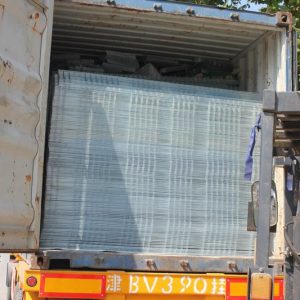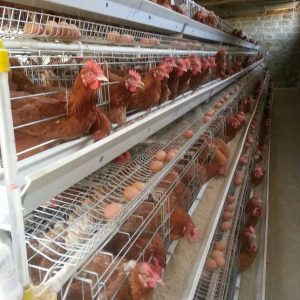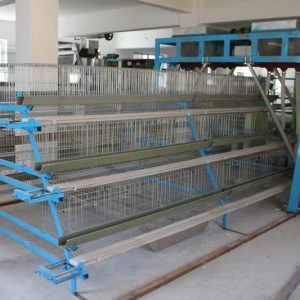
The egg laying rate of laying hens in the country generally declines
Recently, in some provinces and cities in our country, the laying rate of eggs has dropped inexplicably for about 10 to 20% in about 200 days. It is generally accompanied by a reduction in egg weight, and the feed intake of the chickens generally does not change much, the chickens are in good spirits, and are quiet at night. Combining the current epidemic situation of major epidemics in the country and years of experience in laying hen management, I believe that the key to the above problems is not or only the problem of epidemics, but more of weather changes, light, seasons, new corn use, and feeding , Chicken mass, immunization and other comprehensive effects. Please pay attention to the following five major issues:
First, pay attention to the huge impact of continuous rain and rain: from early November to December 10, there are many days of rain and haze in the large number of laying hen breeding areas in the north and south of my country. This kind of bad weather brings at least two major problems to chickens: one is the lack of light in rainy weather and the farmers do not fill up the light in time or the light in the chicken house is insufficient; the second is the impact of cold rainy weather and large temperature differences.
Solution:
1. Pay attention to the problem of insufficient light in the chicken house, add light in time or replace the light bulb: suitable light is an important environmental foundation for maintaining chicken health, calcium and phosphorus absorption and conversion, sexual maturity, and high and stable production. Slow, decreased egg production performance, poor disease resistance, increased dead panning rate. Commercial layer chicken bottom chickens require a light intensity of not less than 10.76 lux. In fact, because farmers are afraid of excessive light pecks (in fact, the light is not too strong but generally insufficient). After deliberately weakening the light or using the automatic feeder widely, the wattage of the bulb does not respond to the increase with height, etc. The lighting of laying hens is generally insufficient. In this case, if the light is not turned on to fill the light on a rainy day (even if the light is turned on to fill the light is not enough), the flock will have a lower egg production rate due to insufficient light. Therefore, we are required to not only turn on the lights on rainy days, but also actually measure, reinstall and adjust the size of the bulbs to ensure that the light meets the standards. To calculate the size of the lamp according to the brightness is not less than 10.76Lux (lux), 10.76Lux = ﹝0.9 (factor) × W (bulb wattage) ﹞/H2 (the distance of the lamp from the bottom chicken head meter). Use incandescent lamp (energy saving energy brightness is 4 times that of incandescent lamp, LED is 6-7 times) bulb wattage W=H210.76/0.9. When the height is 2 meters, the bulb wattage = 10.76 × 4/0.9 = 47.8 watts; when the height is 2.5 meters, the bulb wattage = 10.76 × 2.5 × 2.5/0.9 = 74.7 watts; when the height is 3 meters, the maximum wattage = 10.76 × 3 ×3/0.9=107.6 watts (arrangement of bulbs: the pitch is 1.5 times the height of the bulb, and the distance from the bulb to the wall is 1/2 of the pitch). The use of reflective lampshades can increase the brightness by at least 1/3. Because the intensity of different types of light sources varies greatly, it is difficult to measure with a simple factor (multiple). Therefore, after selecting the light source type and wattage according to the above formula and installing it, be sure to use the light measuring instrument to actually measure the light intensity and make appropriate adjustments.
2. In rainy and rainy weather, more attention should be paid to the setting of energy and ventilation of the feed: the cold and cold chickens need more energy to resist the cold. If the feed is not increased or the added chicken is not increased in fat, it is easy to cause egg production. reduce. To this end, it is necessary to add 1 to 2% or more of high-quality soybean oil according to the water content of corn; adjust the feeding amount of the feeder or increase the number of feedings to ensure that the time of each sky trough is up to 1.5 hours; At about 12 o’clock at night, turn on the lights and feed for more than 1 hour. In cold weather, it is difficult to do it outside. It is best to install the upper and lower intake and exhaust pipes, and close the lower intake pipe appropriately if necessary.
2. The quality of the new corn and the large formula of the feed affect the egg production performance of laying hens in the cold season: due to the high water content of the new corn, farmers have not added or did not add enough high-quality soybean oil to balance the energy decline; plus winter Laying hen formula energy rose to the top, and we did not adjust the large formula to the winter formula in time.
Solution:
1. Actually measure the water content of corn, add high-quality soybean oil in sufficient amount to balance the energy decline: According to the method of adding 1% of water for every 14% or more of corn water, add at least 0.4% soybean oil to balance the energy loss caused by high water content. For example, corn contains 18% water, soy oil must be added 18%-14%=4%, 4%×0.4=1.6%. At the same time, we must choose to use high-quality corn, preferably dried corn.
2. Adjust the large formula in a timely manner: When the outside average temperature drops below 15 ℃, the large formula should be adjusted gradually to increase 1-2% corn and reduce 1-2% soybean meal. On the basis of ensuring that the daily intake of crude protein is 18 to 18.5 g/piece, the energy ratio of the protein is 13.5 to 13.2 g/megajoule.
Third, the extension of the negative effects of summer brooding and rearing: Most of the peak laying hens of about 200 days in December were brooded and reared in summer. Due to the scorching summer heat, it is difficult to reach the standard weight, and these chickens that do not meet the standard in summer have to face the use of new corn at the beginning of production or peak, and face the cold stress of huge seasonal changes. Therefore, a little careless management, these chickens will inexplicably decline in egg production rate in late autumn and early winter each year.
Solution: Try to change the time of brooding, staggering the high temperature of brooding from April to July each year: brooding and brooding from April to July with high temperature each year is the worst flock in the year, such as weight and uniformity. Taking into account factors such as heat preservation and saving money, many habit of raising broods in the south (also in cages) has the habit of brooding in hot seasons. These chickens that brood under the influence of “days” and produce difficult-to-achieve standards have to use new corn just at the beginning of production or at the peak; they also have to face many adverse factors such as the huge cold stress brought by seasonal changes. This undoubtedly increases the risk of breeding and the possibility of declining egg production.
Fourth, the reduction in antibody levels is also an important factor in the decrease in egg production rate: chickens around 200 days are the chickens that have just reached the peak. These chickens can consume huge amounts of energy, the antibody levels decline rapidly, and the antibody levels are low, which has reached the edge of immunization. In this case, if there is no timely immunization, coupled with the adverse effects of weather changes, insufficient light, high water content in corn, insufficient feeding, etc., a drop in egg production rate will be very normal and common.
Solution: Immediately do immunizations: about 1 month after the peak period is stable, first of all, immunization of Newcastle disease-H9 must be done, each chicken is injected with 0.7 ml / bird; H5 avian influenza should be done every 10-15 days . After that, bird flu H5 lasted up to 2 months, and Newcastle disease H9 was immunized once every 3 months. For immunization of Newcastle disease live vaccines, it depends on the immunization of chickens according to the time: no matter how long the immunization is, as long as the chickens have 2 to 3 of the following phenomena, they must be immunized again: ① the layers are lightened or have dark spots ; ② Feces become thinner; ③ Celosia of individual chicken combs; ④ Increased water spitting into the feed trough.
If conditions permit, immunization of Newcastle disease-H9 and H5 avian influenza can be done according to antibody testing, to ensure that Newcastle disease and H9 antibody levels are above 9㏒2 and the dispersion is not more than 3; H5 antibody levels are above 7㏒2 . For those without antibody detection conditions, it is recommended to do the immunization according to the above procedure about 1 month after the laying hen peak stabilizes. The immunization of H120 or the fourth line or clone 30 can be combined with the injection of Newcastle disease-H9, with 3-4 times the amount of nasal drops.
Fifth, insufficient feeding will bring about a reduction in egg production performance: due to the inertial thinking of farmers, when the weather becomes cooler, the output of the seeder is not adjusted in time or the number of feedings is not increased. In this case, the chicken will reflexively allocate a large amount of energy to resist the cold, and it is actually used to lay eggs and reduce physical fitness. This will cause a decrease in egg production rate and deterioration of physical fitness. To this end, the feeding amount and energy of the feed should be adjusted as described in the “Cold and Rainy Weather and the Influence of Large Temperature Differences” in the above cold season to ensure that there is sufficient nutrition for egg production and resistance to the threat of pathogenic microorganisms.


